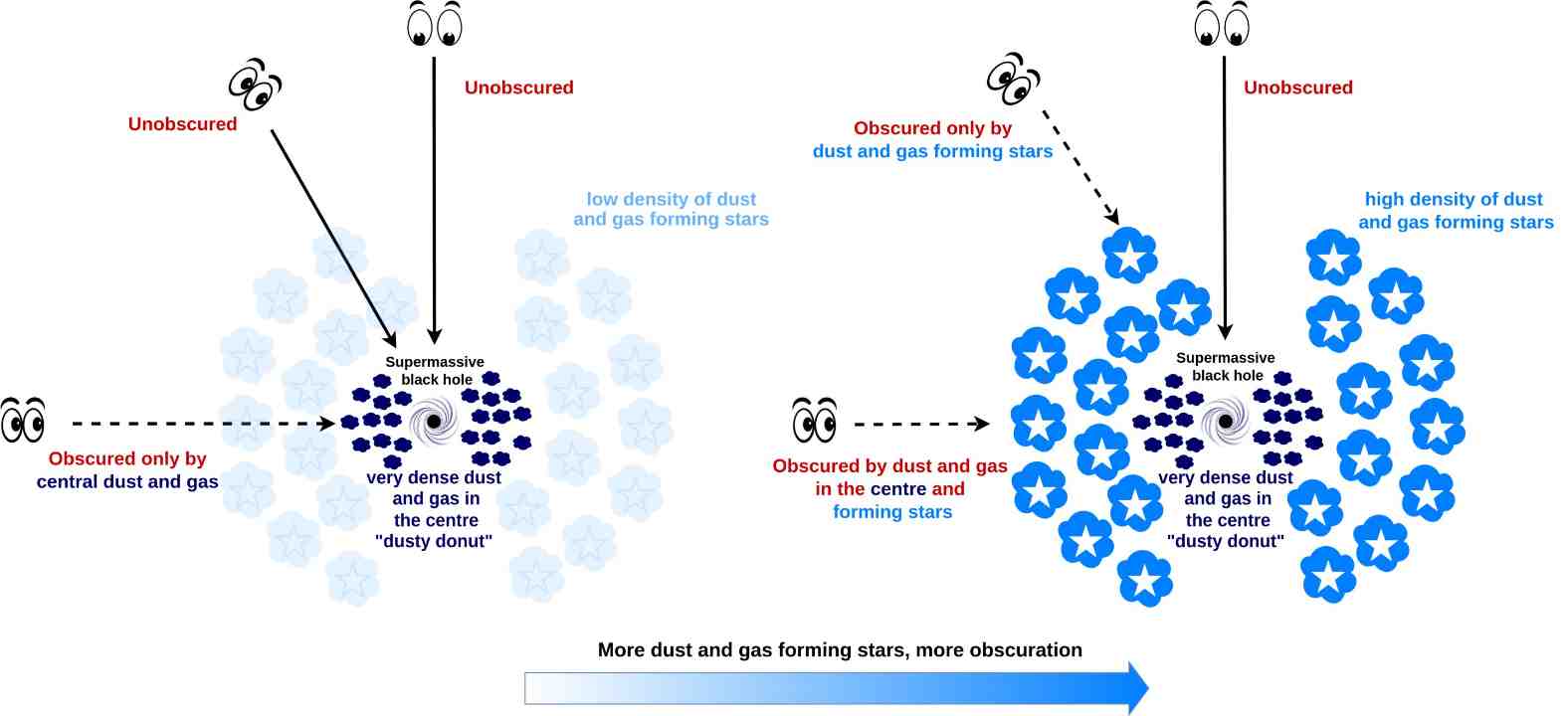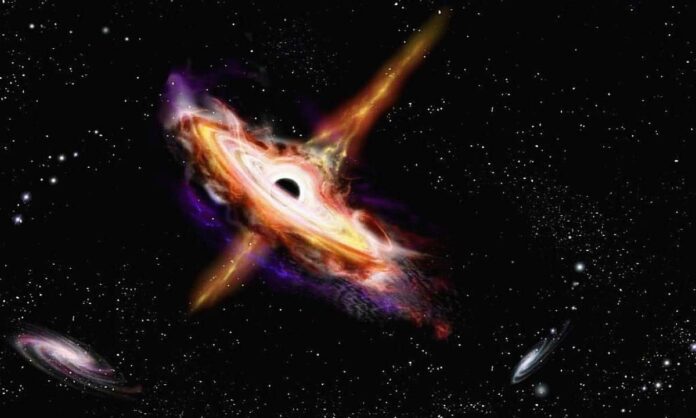A new study reveals that supermassive black holes at the centers of galaxies, known as quasars, can sometimes be obscured by dense clouds of gas and dust in their host galaxies.
This challenges the prevailing idea that quasars are only obscured by donut-shaped rings of dust in the close vicinity of the black hole.
Quasars are extremely bright objects powered by black holes gorging on surrounding material. Their powerful radiation can be blocked if thick clouds come between us and the quasar.
Astronomers have long thought this obscuring material only exists in the quasar’s immediate surroundings, in a “dusty torus” (or donut) encircling it.
Now, a team of scientists led by Durham University have found evidence that in some quasars, the obscuration is entirely caused by the host galaxy in which the quasar resides.
Using the Atacama Large Millimeter Array (ALMA) in Chile, they observed a sample of very dusty quasars with intense rates of star formation.
They found that many of these quasars live in very compact galaxies, known as “starburst galaxies,” no more than 3000 light-years across.
These starburst galaxies can form more than 1000 stars like the sun per year.

Illustration of the sources of obscuration. Orange clouds represent the dust and gas close to the central black hole, and blue clouds with stars represent the dust and gas in the galaxy forming the stars. The gradient in the blue color represents the amount of gas and dust in the galaxy, from little (transparent) to large (opaque) amount of gas and dust. Credit: Durham University
To form such a large number of stars, the galaxy needs a huge amount of gas and dust, which are essentially the building blocks of stars. In such galaxies, clouds of gas and dust stirred up by rapid star formation can pile up and completely hide the quasar.
The full study has been published in the journal Monthly Notices of the Royal Astronomical Society (MNRAS). Lead author of the study Carolina Andonie, Ph.D. student in the Center for Extragalactic Astronomy at Durham University, said, “It’s like the quasar is buried in its host galaxy.
“In some cases, the surrounding galaxy is so stuffed with gas and dust, not even X-rays can escape.
“We always thought the dusty donut around the black hole was the only thing hiding the quasar from view.
“Now we realize the entire galaxy can join in.
“This phenomenon only seems to happen when the quasar is undergoing an intense growth spurt.”
The team estimates that in about 10–30% of very rapidly star-forming quasars, the host galaxy is solely responsible for obscuring the quasar.
The findings provide new insights into the link between galaxy growth and black hole activity.
Obscured quasars may represent an early evolutionary stage, when young galaxies are rich with cold gas and dust, fueling high rates of star formation and black hole growth.
Study co-author Professor David Alexander of Durham University said, “It’s a turbulent, messy phase of evolution, when gas and stars collide and cluster in the galaxy’s center. The cosmic food fight cloaks the baby quasar in its natal cocoon of dust.”
Unveiling these buried quasars will help scientists understand the connection between galaxies and the supermassive black holes at their hearts.
Reference:
Carolina Andonie et al, Obscuration beyond the nucleus: infrared quasars can be buried in extreme compact starbursts, MNRAS (2023). On arXiv: DOI: 10.48550/arxiv.2310.02330
